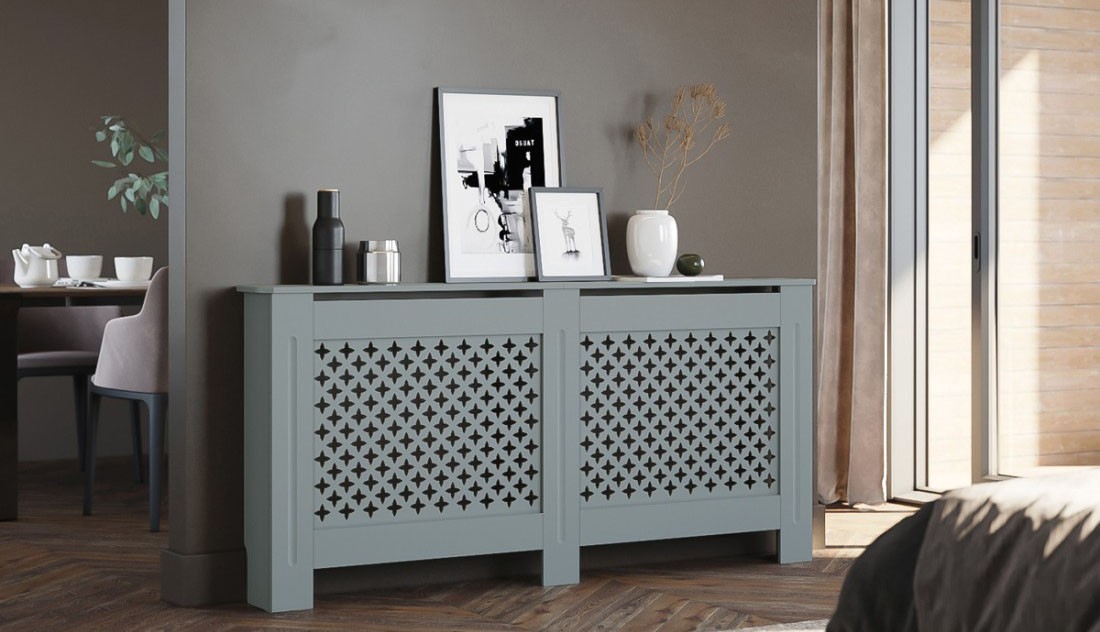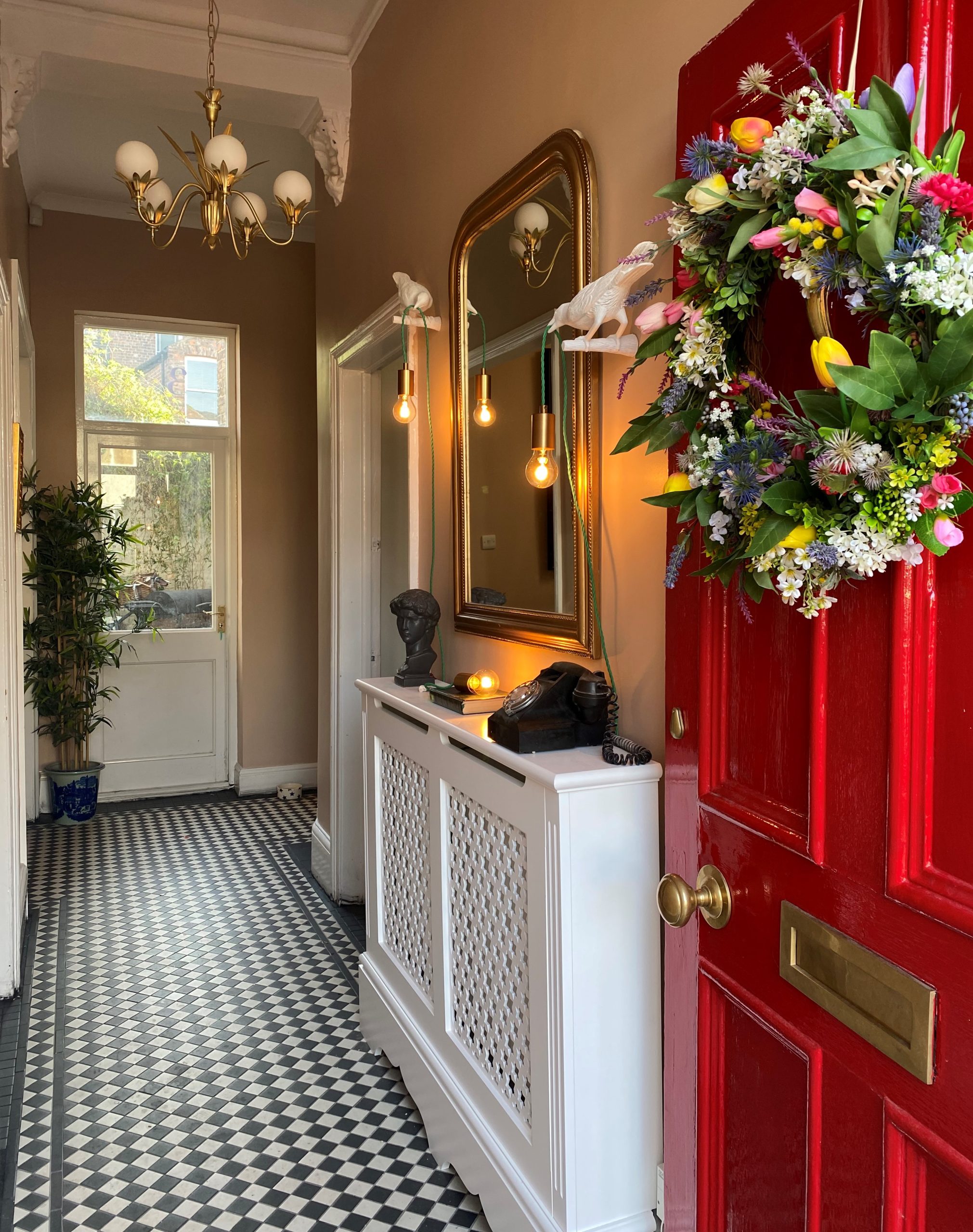Secret Features to Think About When Choosing Customized Radiator Covers for Your Area
Choosing custom-made radiator covers involves a number of essential elements. Material resilience is important for longevity, while design ought to integrate with the existing decoration. Dimension fit is essential for functionality and aesthetic appeals. Additionally, factors to consider around warm effectiveness and air movement can impact efficiency. The nuances of setup and maintenance typically continue to be forgotten. Understanding these facets will assist you towards a notified choice that boosts your room easily. What other components should be taken into account?

Product Options for Custom Radiator Covers
When choosing custom radiator covers, the option of materials plays an important role in both visual appeals and functionality. Numerous materials are readily available, each with distinct residential properties that accommodate various needs. Wood, for example, supplies a classic appearance and can be conveniently tailored, but it may be at risk to deforming in high moisture. Steel alternatives, such as aluminum or steel, provide durability and warm resistance, making them ideal for high-heat environments. custom radiator covers.For those looking for a contemporary touch, MDF (medium-density fiber board) is a preferred selection; it can be repainted or finished to match any design while staying cost-efficient. Additionally, some may select acrylic, which allows for creative designs and openness, although it might not be as heat-resistant. Ultimately, the choice of material greatly influences not only the cover's appearance yet also its durability and efficiency in effectively handling warm result
Style Designs to Match Your Home Decoration
Radiator covers serve a useful objective, their style can significantly enhance the total aesthetic of a space. Home owners can choose from various designs to perfectly integrate these covers right into their existing design. For a modern appearance, sleek steel or minimalist wood layouts supply a tidy, contemporary ambiance. On the other hand, conventional homes may benefit from ornate wooden covers with detailed makings that mirror traditional craftsmanship.Farmhouse designs often incorporate rustic components, using recovered wood for a cozy, welcoming touch. For those who like an eclectic technique, bold shades and patterns can be utilized to create a declaration item that attracts the eye.Additionally, integrating ornamental grilles or open styles can enable air movement while adding visual interest. Selecting a layout that complements the general motif of the home assurances that the radiator cover becomes not simply a useful aspect however additionally an elegant centerpiece within the room.
Size and Fit Considerations
Exactly how can homeowners ensure their customized radiator covers fit flawlessly within their spaces? Accurate dimensions are vital for achieving a seamless fit. Property owners need to start by determining the size, size, and elevation of their radiators, considering any type of sticking out aspects such as valves or pipes. In addition, it is vital to consider the surrounding area, guaranteeing that the cover does not block airflow or interfere with furnishings placement.Choosing the best material and design can also affect fit; as an example, some products may call for specific thicknesses to assure durability. Homeowners must additionally think of the intended design of the room, guaranteeing that the cover complements existing decoration while fitting comfortably in the assigned location. A well-measured and attentively developed cover not just enhances appearances yet additionally assures efficient home heating by allowing appropriate air flow around the radiator.
Installment Process and Needs
To ensure a successful installation of custom radiator covers, mindful preparation and focus to information are vital. One should precisely determine the radiator dimensions and surrounding space to confirm an appropriate fit. Next, selecting the right products is very important; alternatives might consist of timber, metal, or composite products, each calling for specific tools and strategies for installation.Before starting the setup, it is recommended to gather all required devices, such as drills, braces, and screwdrivers, to improve the procedure. The installation area need to be cleared of barriers for safety and security and efficiency.Once all set, the custom-made covers can be safely installed, making certain that they are leveled and straightened correctly. Adhering to producer standards throughout this stage is imperative to avoid any architectural issues. A comprehensive examination needs to be performed to validate that the covers are safely affixed and visually attractive, contributing to the total visual of the room.
Warmth Performance and Air Movement
When selecting personalized radiator covers, heat performance and air movement are vital elements to contemplate. Correct air flow layout warranties excellent heat circulation throughout an area, taking full advantage of and protecting against cool areas convenience. Attention to these components can greatly boost the total efficiency of a heating unit.
Optimum Heat Distribution
Ideal heat circulation is important for keeping a comfortable interior environment, and custom-made radiator covers can significantly enhance this procedure. custom radiator covers. These covers are made not only for visual appeals yet also to maximize heat effectiveness. By guiding warm air efficiently throughout the space, they stop chilly areas and ensure that warm distributes evenly. Appropriately created covers can promote air movement while decreasing obstruction, enabling warm air to rise and spread naturally. In addition, the materials made use of in personalized radiator covers can impact heat retention and result. Selecting covers that balance layout and capability is necessary, as they can add noticeably to a home's overall heating efficiency, improving comfort and possibly lowering power costs over time
Air Flow Design Factors To Consider
Efficient ventilation design is crucial for ensuring excellent warmth performance and airflow in areas with radiator covers. When picking a custom-made cover, it is important to think about features that help with unhampered air movement. Grilles and vents ought to be tactically positioned to allow warm air to circulate freely while protecting against overheating. Additionally, the material of the cover can affect air flow; light-weight products usually promote far better ventilation contrasted to larger alternatives. The layout ought to also account for preserving optimal distances between the cover and radiator to improve performance. Inevitably, a properly designed radiator cover will not just boost the aesthetic allure of a room yet likewise add to reliable heating, developing an extra comfy atmosphere.
Customization and Personalization Features

Maintenance and Care Tips for Longevity
Maintaining personalized radiator covers is necessary for their durability and appearance. Normal cleaning practices, making use of proper cleansing solutions, and seasonal evaluations can greatly improve their resilience. Executing these treatment tips guarantees that the covers stay useful and aesthetically appealing with time.
Regular Cleaning Practices
On a regular basis cleaning personalized radiator covers is necessary for maintaining their look and capability. Dust build-up can block air movement, potentially impacting the radiator's efficiency. It is recommended to carry out a constant cleaning timetable, preferably when a week, to avoid build-up. A soft microfiber cloth or a duster is suggested for this job, as these materials effectively catch dirt without scratching the surface. Care must be taken to clean the locations bordering the radiator cover too, making sure that no dust is delegated work out. For homes with pet dogs or high foot web traffic, more constant dusting might be essential. This simple maintenance practice not just enhances the aesthetic appeal but also contributes to the durability of the radiator cover.
Proper Cleaning Up Solutions
Selecting suitable cleaning options is essential for the longevity of personalized radiator covers. Property owners must select gentle, non-abrasive cleansers to stop damages to the surface area finish. Mild soap mixed with cozy water is usually effective for basic cleansing, while avoiding harsh chemicals that may remove the product. A soft cloth or sponge is recommended for application, making sure that no sandy materials are utilized that can scrape the cover. It's essential to dry the cover completely after cleaning up to avoid wetness buildup, which can cause rust or mold and mildew. Regular upkeep with ideal cleansing products not just boosts the look of the radiator covers however additionally prolongs their life expectancy, ensuring they continue to be a visual and functional part of the area.
:max_bytes(150000):strip_icc()/GettyImages-467372450-9c0fc9d43dc94c338ece40bea6806327.jpg)
Seasonal Examination Tips
Although custom radiator covers are developed for toughness, conducting seasonal inspections is essential for guaranteeing they continue to be in perfect condition. House owners ought to begin by checking for any kind of indications of damage, such as damages, scratches, or rust. Furthermore, confirming that the cover fits snugly and safely around the radiator is essential, as loosened installations can result in ineffectiveness. During assessments, dirt and particles ought to be removed to prevent build-up that can obstruct air flow. Furthermore, looking for wetness or mold and mildew is critical, as these can compromise the cover's stability. Analyzing the paint or coating for wear allows for timely touch-ups, improving both aesthetic appeals and longevity. Routine evaluations aid maintain performance and look while lengthening the lifespan of personalized radiator covers.
Frequently Asked Concerns
Can I Make Use Of Custom-made Radiator Covers in Outdoor Spaces?
The concern of making use of custom radiator covers in outdoor rooms occurs frequently. Normally, these covers are made for interior usage, as outside problems can influence and damage materials performance, making them improper for exterior environments.
What Is the Typical Price of Custom-made Radiator Covers?
The typical cost of customized radiator covers typically varies from $200 to $800, relying on materials, size, and design intricacy. House owners should consider their budget and aesthetic preferences when making a decision.
Exist Eco-Friendly Product Options Available?
The questions relating to environment-friendly material options revealed that various sustainable materials, such as reclaimed wood, bamboo, and recycled metals, are offered for custom radiator check it out covers, attracting ecologically conscious customers looking for elegant and liable home options.
Exactly how Do I Clean Complex Styles on Radiator Covers?
Cleaning up intricate layouts on radiator covers calls for a gentle strategy. Soft towels or brushes with moderate soap and water can efficiently get rid of dirt and gunk, guaranteeing that the fragile details remain undamaged while protecting the cover's appearance.
Do Custom-made Radiator Covers Decrease Sound From the Heater?
Customized radiator covers can help in reducing sound from furnace by wetting resonances and noise. Their layout usually includes shielding materials, which additionally reduces audio transmission, producing a quieter and extra comfortable environment in the space. When choosing personalized radiator covers, the selection of materials check this plays a vital role in both aesthetic appeals and functionality. Additionally, the products used in custom-made radiator covers can impact warmth retention and result. Effective air flow design is necessary for guaranteeing optimal warm performance and airflow in spaces with radiator covers. Personalized radiator covers are made for sturdiness, carrying out seasonal assessments is crucial for ensuring they stay in excellent condition. The typical expense of customized radiator covers usually varies from $200 to $800, depending on products, dimension, and layout intricacy.